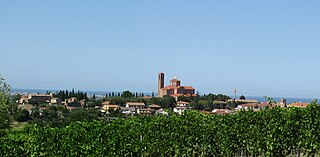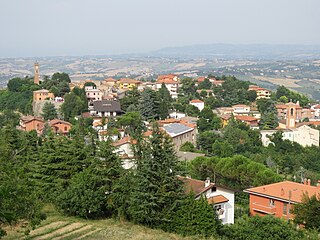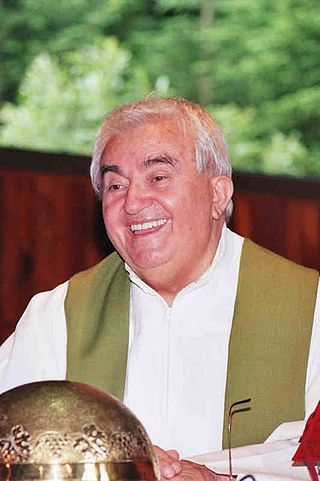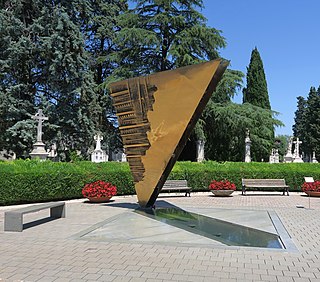This article needs additional citations for verification .(March 2024) |
This is a list of cemeteries in Italy still in existence. Only notable cemeteries are included, and churchyards are excluded.
This article needs additional citations for verification .(March 2024) |
This is a list of cemeteries in Italy still in existence. Only notable cemeteries are included, and churchyards are excluded.
| Name | Type or religious affiliation | Established | Location | Region | References |
|---|---|---|---|---|---|
| Old English Cemetery, Livorno | Evangelical | 1645 | Livorno | Tuscany | [ citation needed ] |
| Protestant Cemetery, Rome | Protestant | 1716 | Rome | Lazio | [ citation needed ] |
| Cemetery of the 366 Fossae, Naples | 1762 | Naples | Campania | [ citation needed ] | |
| San Michele Cemetery, Venice | Monumental | 1807 | Venice | Veneto | [ citation needed ] |
| Monumental Cemetery of Brescia | Monumental | 1810 | Brescia | Lombardy | [1] [2] |
| Cemetery of Poggioreale, Naples | Monumental | Naples | Campania | [ citation needed ] | |
| Monumental Cemetery of Rimini | Monumental | 1813 | Rimini | Emilia-Romagna | [3] |
| English Cemetery, Naples | Protestant | 1826 | Naples | Campania | [ citation needed ] |
| English Cemetery, Florence | Evangelical | 1827 | Florence | Tuscany | [ citation needed ] |
| Campo Verano | Monumental | 1835 | Rome | Lazio | [ citation needed ] |
| Monumental Cemetery of Staglieno | Monumental | 1851 | Genoa | Liguria | [ citation needed ] |
| Coriano Ridge War Cemetery | Military | 1945 | Coriano | Emilia-Romagna | [4] [5] |
| Name | Type | In use | Location | Region | References |
|---|---|---|---|---|---|
| Catacombe dei Cappuccini | Catacombs | Palermo | Sicily | [ citation needed ] | |
| Fontanelle Cemetery | Charnel house | Naples | Campania | [ citation needed ] |

The Republic of San Marino's public transport network consists of a local bus network and the Funivia di San Marino, an aerial cablecar system between Borgo Maggiore and the City of San Marino. Both means are operated by the Azienda Autonoma di Stato per i Servizi Pubblici, the Sammarinese state company for public transport.

Rimini is a city in the Emilia-Romagna region of Northern Italy.

Romagna is an Italian historical region that approximately corresponds to the south-eastern portion of present-day Emilia-Romagna in northern Italy.

The province of Rimini is the southernmost province of the Emilia-Romagna region of Italy. Its capital is the city of Rimini, one of the "seven sisters" of the historical region of Romagna.

Serravalle is one of the nine castelli of San Marino. It has a population of 10,878 inhabitants and an area of 10.53 km2. It is the most densely populated municipality in San Marino, and contains its largest settlement (Dogana). Serravalle is located on the edge of the Apennine Mountains.

Rimini and San Marino "Federico Fellini" International Airport, formerly Rimini Miramare Airport, and more simply known as Rimini Airport or Fellini Airport, is an international airport located in Rimini, in the region of Emilia-Romagna, northern Italy.

Riccione is a comune (municipality) in the Province of Rimini, Emilia-Romagna, northern Italy.

Coriano is a comune in the province of Rimini. This town is known for being the town of the Motorcycle World Champion, in 250cc class, Marco Simoncelli.

Montescudo is a frazione and former comune (municipality) in the Province of Rimini in the Italian region Emilia-Romagna, located about 120 kilometres (75 mi) southeast of Bologna and about 15 kilometres (9 mi) south of Rimini.

Morciano di Romagna is a comune (municipality) in the Province of Rimini in the Italian region Emilia-Romagna. It is about 120 kilometres (75 mi) southeast of Bologna and about 15 kilometres (9 mi) southeast of Rimini. The Conca flows past the town.

The Ausa is a minor river some 17 kilometres (11 mi) long that traverses part of northern San Marino and Emilia–Romagna in Italy.

Oreste Benzi was an Italian Catholic priest and founder of the Pope John XXIII Community. Benzi championed the rights of the individual and founded his association to aid teenagers in their lives and their path to Jesus Christ while also striving to evangelize to those including the destitute.

Louis Emanuel Jean Guy de Savoie-Carignan de Soissons CVO RA FRIBA (1890–1962) was the younger son of Charles de Savoie-Carignan, Count de Soissons. An architect, he was professionally known as Louis de Soissons.

The Battle of Rimini took place between 13 and 21 September 1944 during Operation Olive, the main Allied offensive on the Gothic Line in August and September 1944, part of the Italian Campaign in the Second World War. Rimini, a city on Italy's Adriatic coast, anchored the Rimini Line, a German defensive line which was the third such line of the Gothic Line defences.

The Rimini–San Marino railway was a 31.5-kilometre (19.6-mile) electrified narrow-gauge railway that connected Rimini, Italy, with the City of San Marino, Republic of San Marino.

The German Futa Pass Cemetery is Italy's largest war cemetery. According to the German War Graves Commission it holds remains of 30,800 German soldiers who died in the Second World War. It is located at the summit of the Futa Pass in the Apennines and in Mugello, near Traversa in the commune of Firenzuola, that is, about 40 kilometers north of Florence and 40 kilometers south of Bologna along National Highway Nr. 65 near the border of Tuscany and Emilia-Romagna.

The Monumental Cemetery of Brescia is one of the first and most ancient monumental cemetery in Italy. It was the first construction project by the Neoclassical architect Rodolfo Vantini, who started its erection in 1813 and dedicated his whole life to its creation.

The Monumental Cemetery of Rimini, also known as the Civic Cemetery of Rimini, is the main cemetery in the city of Rimini, in the region of Emilia-Romagna, northern Italy.
The Villa des Vergers is a countryside villa in San Lorenzo in Correggiano, a frazione of Rimini, in the region of Emilia-Romagna, northern Italy. Dating to the 17th century, the villa was purchased by Adolphe Noël des Vergers in 1843, and substantially redesigned in 1879 by Arthur-Stanislas Diet. Between 1938 and 1946, it was owned by Mario Ruspoli, 2nd Prince of Poggio Suasa, who employed Pietro Porcinai to design the villa's gardens. The villa was used as a military headquarters by German forces in the Second World War, and has since been owned by a series of local entrepreneurs.

The Coriano Ridge War Cemetery, locally known as the English War Cemetery, is a Commonwealth military cemetery in Coriano, in the region of Emilia-Romagna, northern Italy, for Allied soldiers who died in the Second World War during the Allied advance through the Valconca and the battles of Coriano and Rimini.